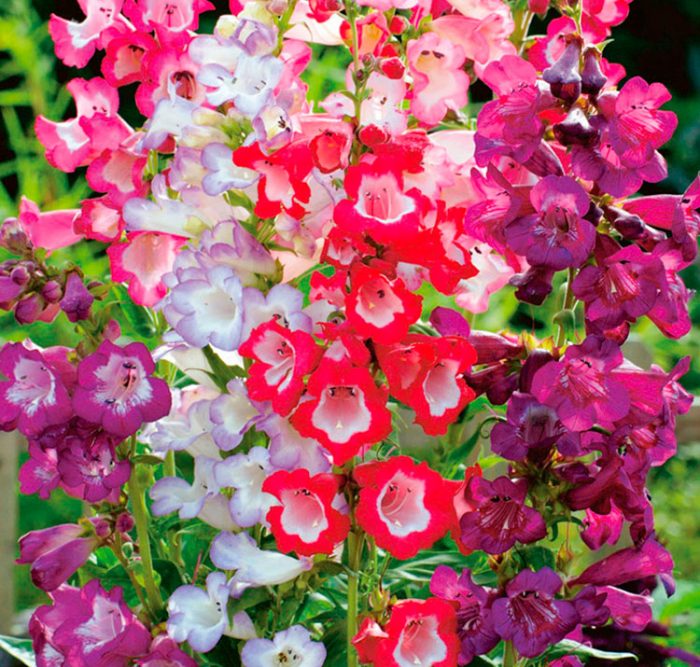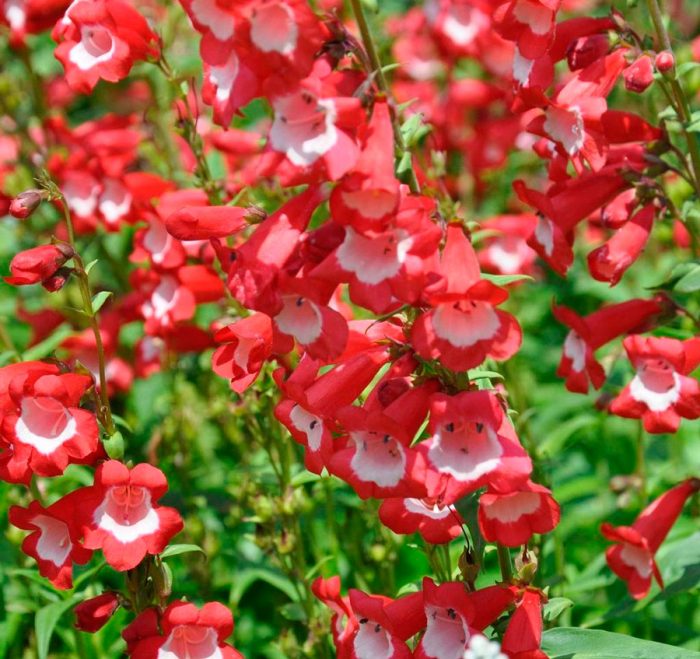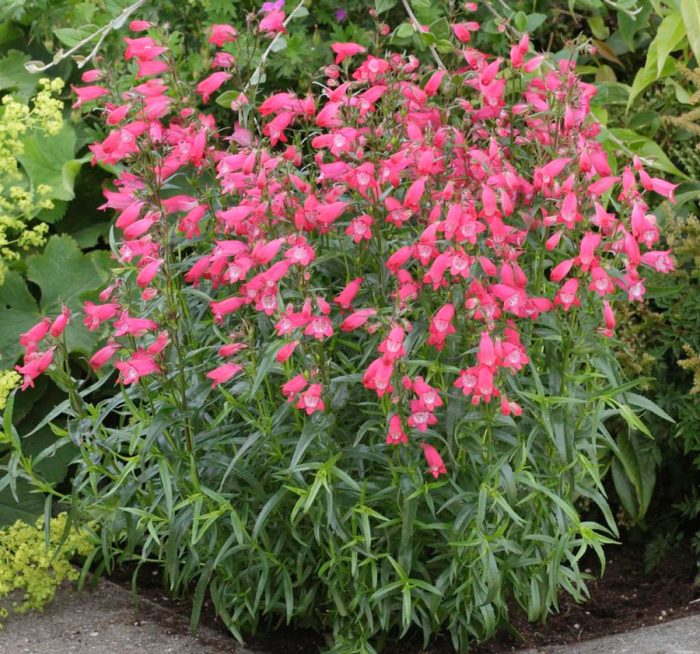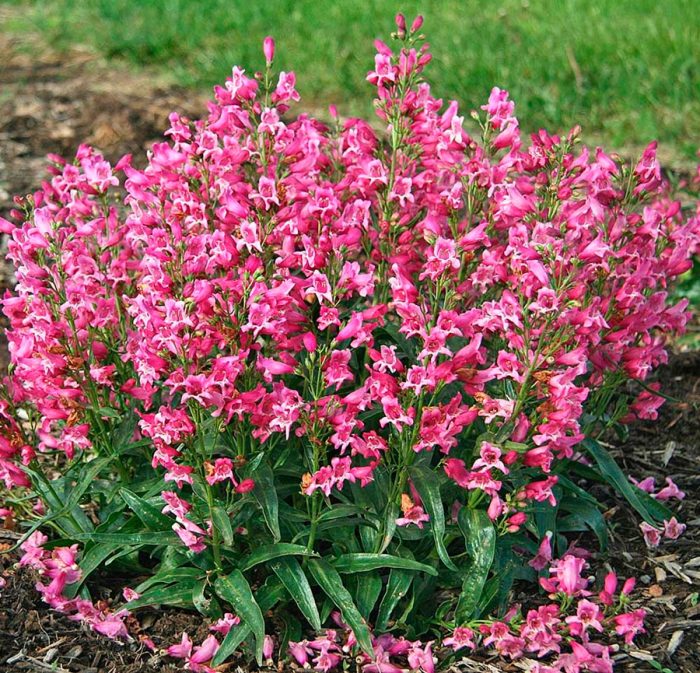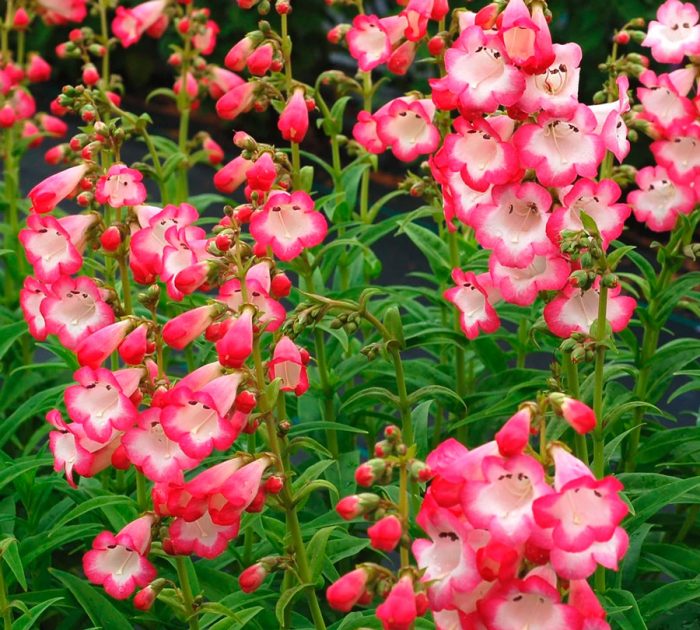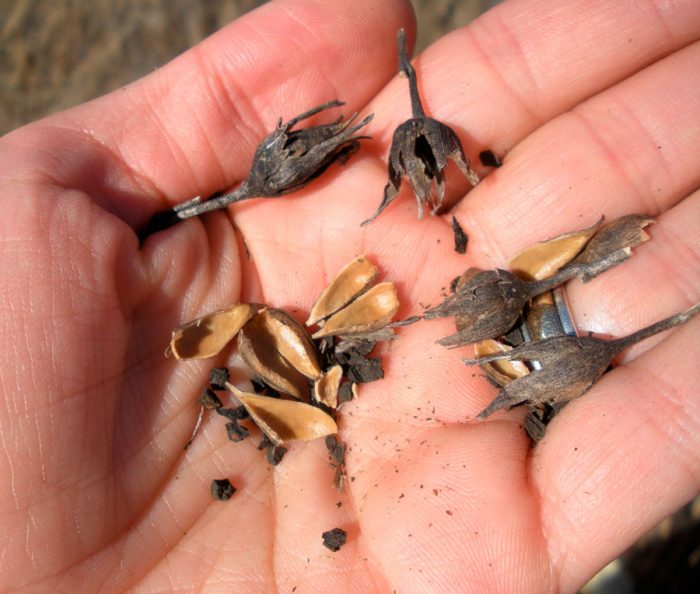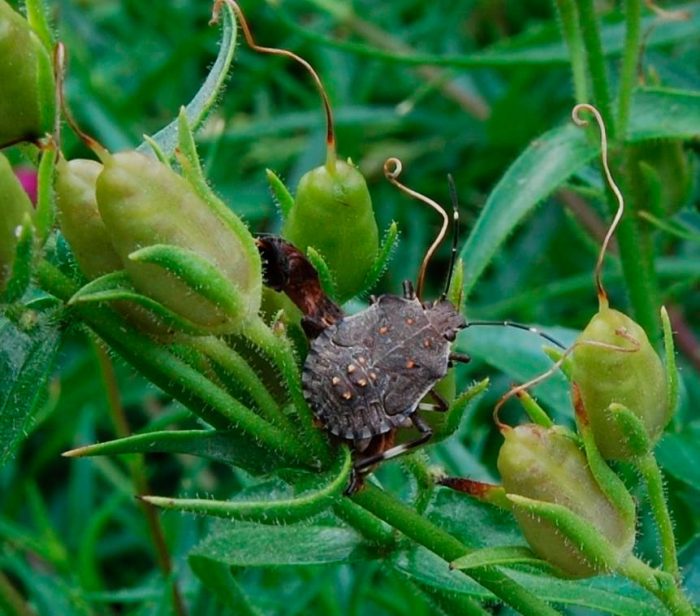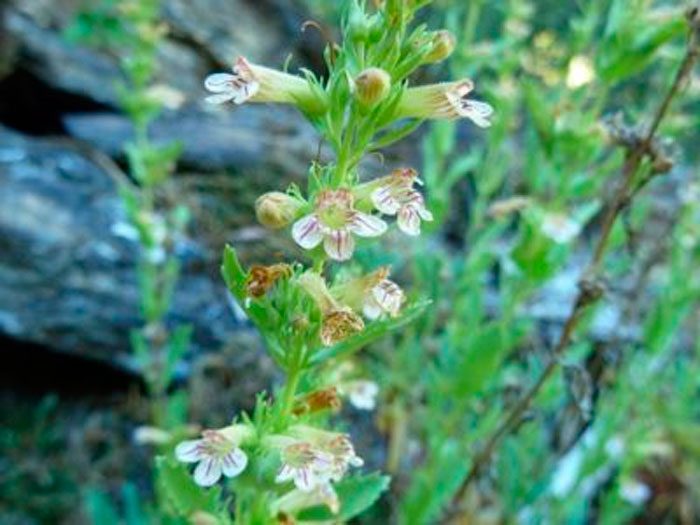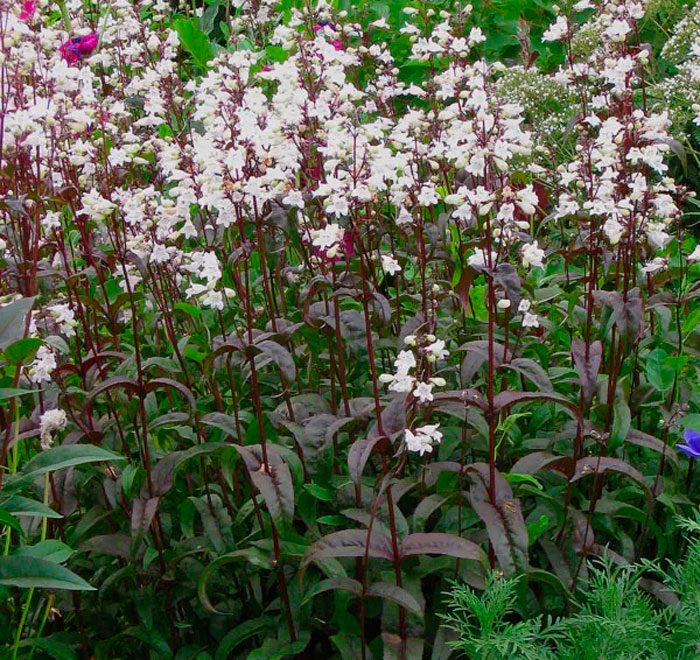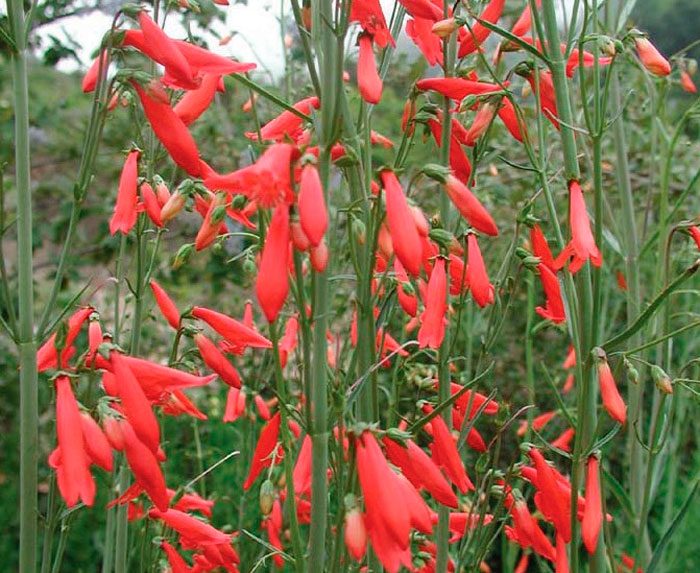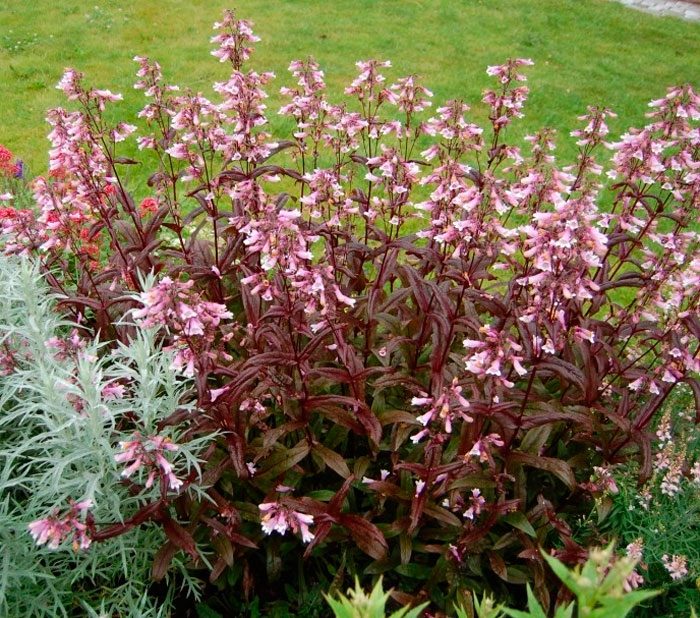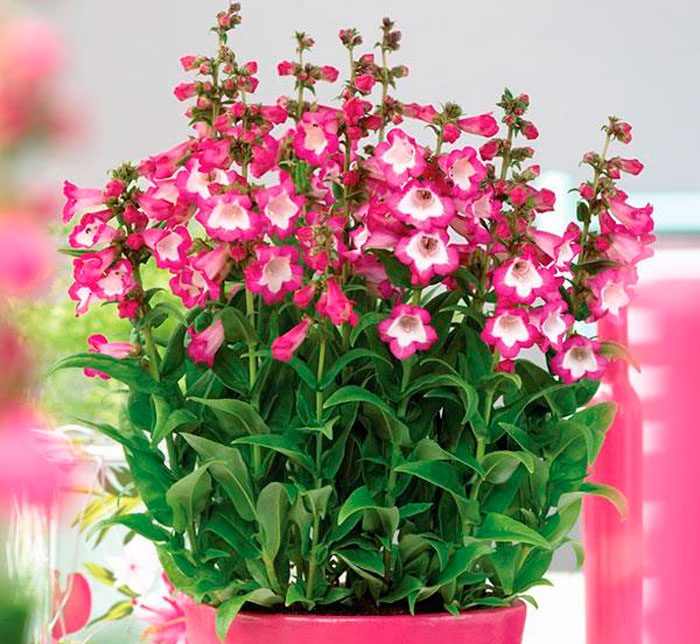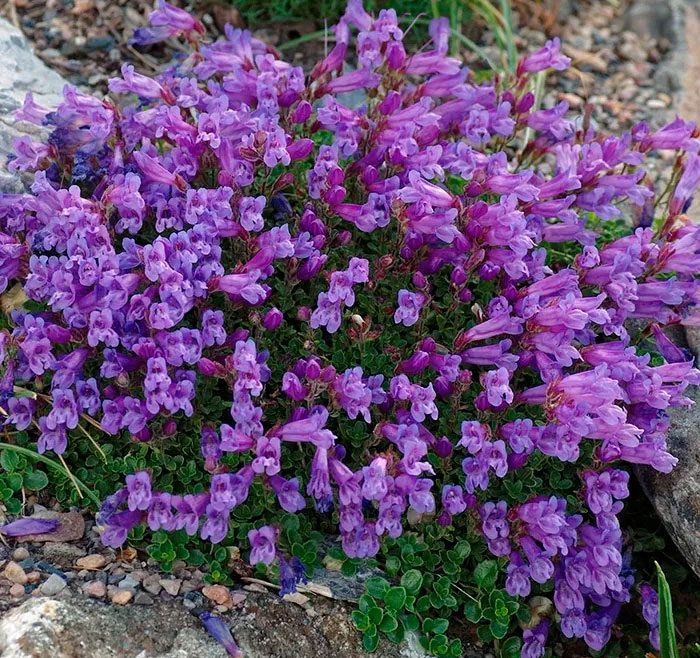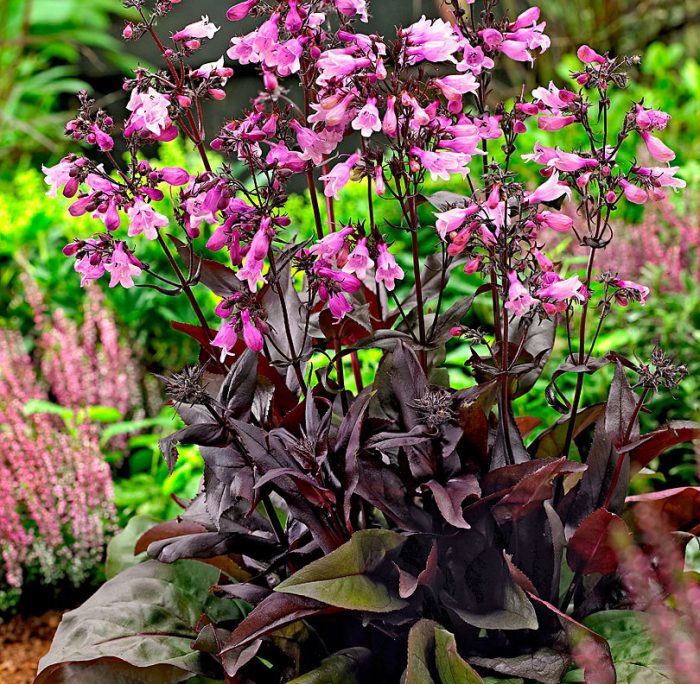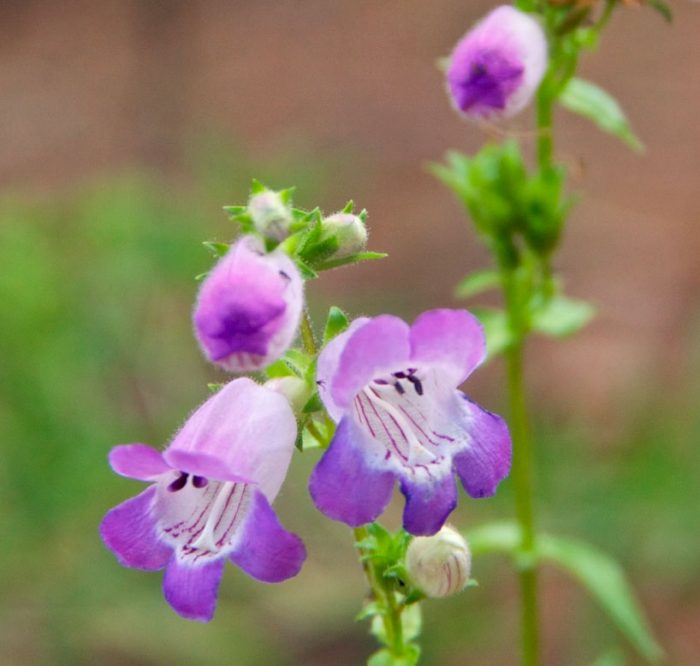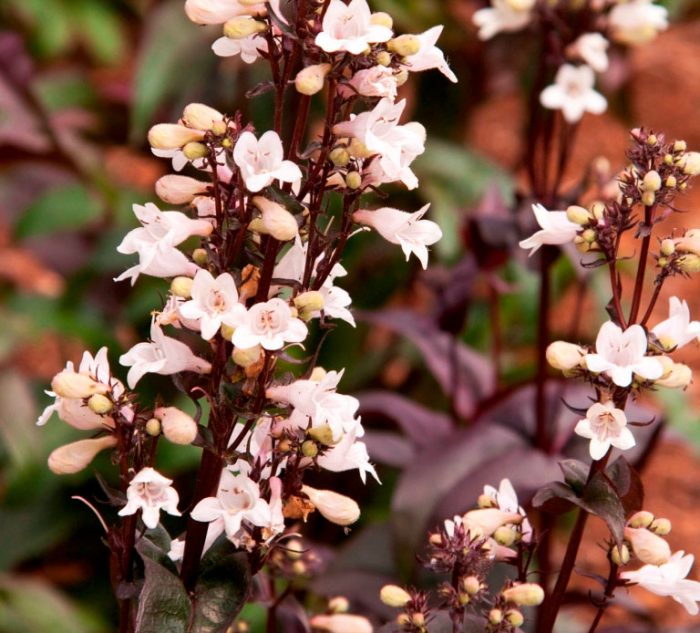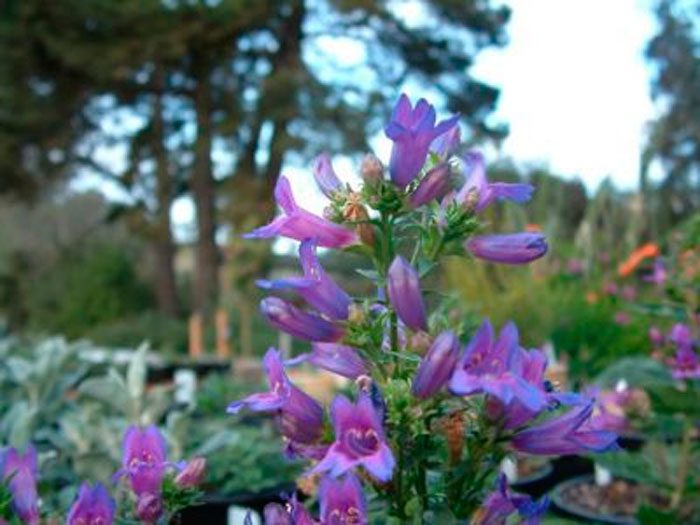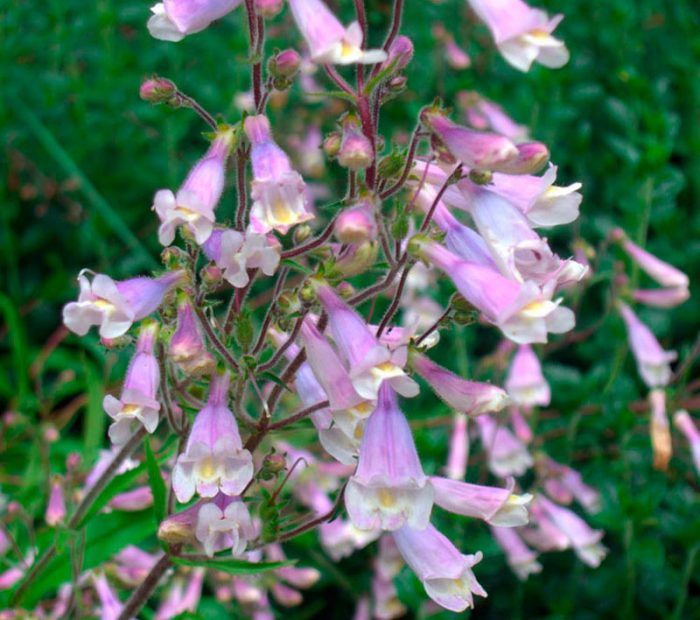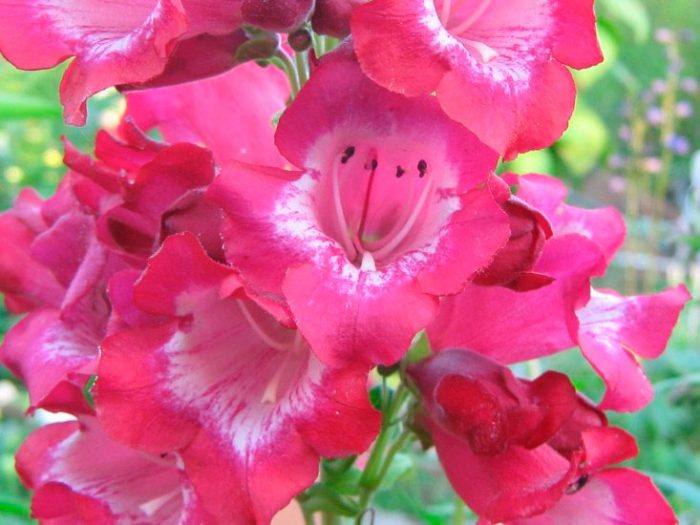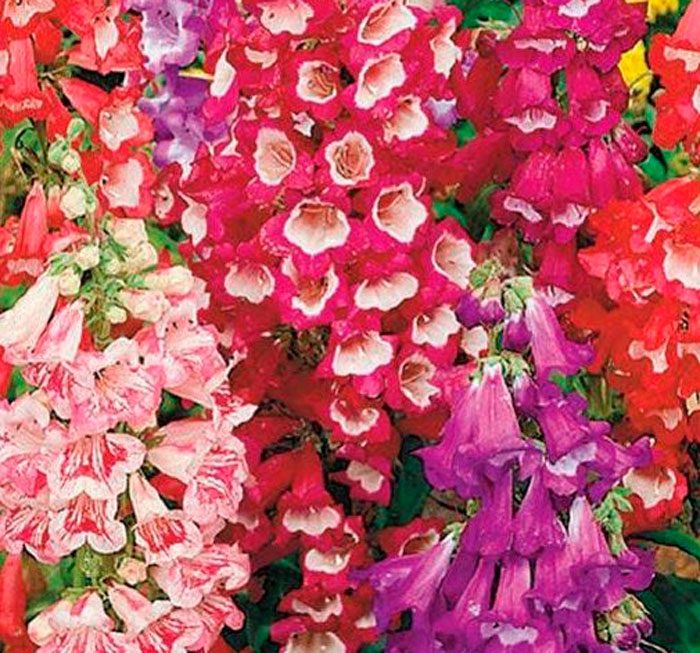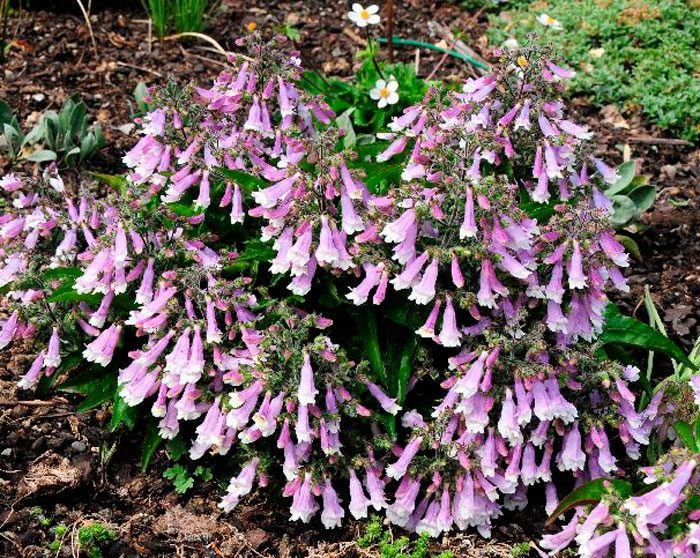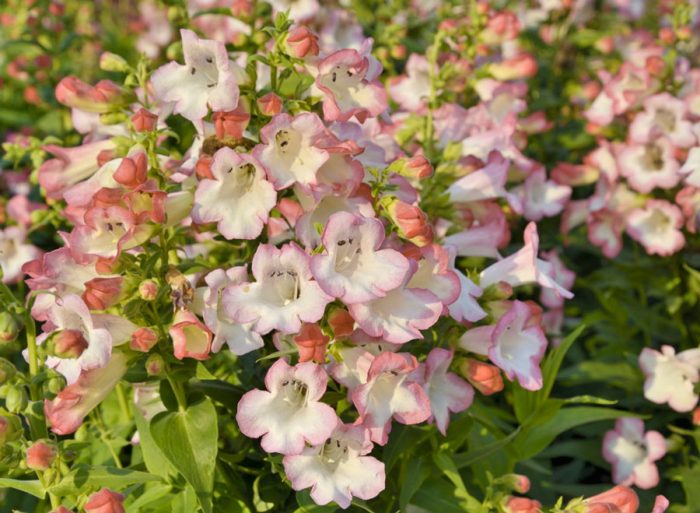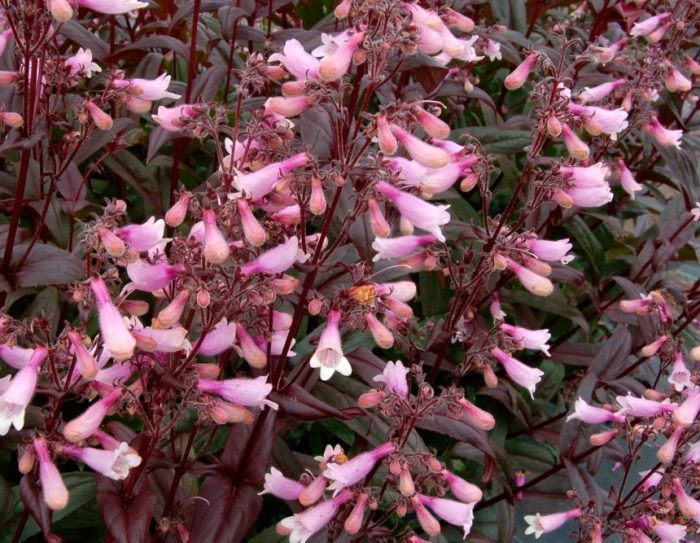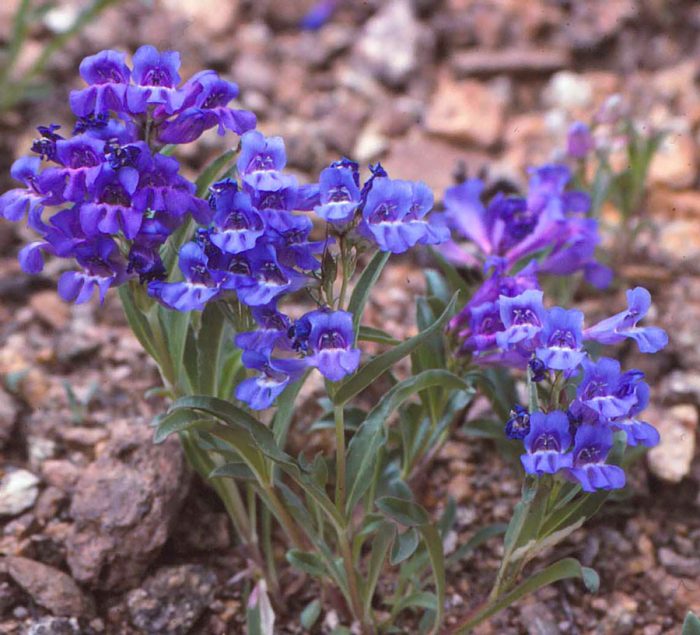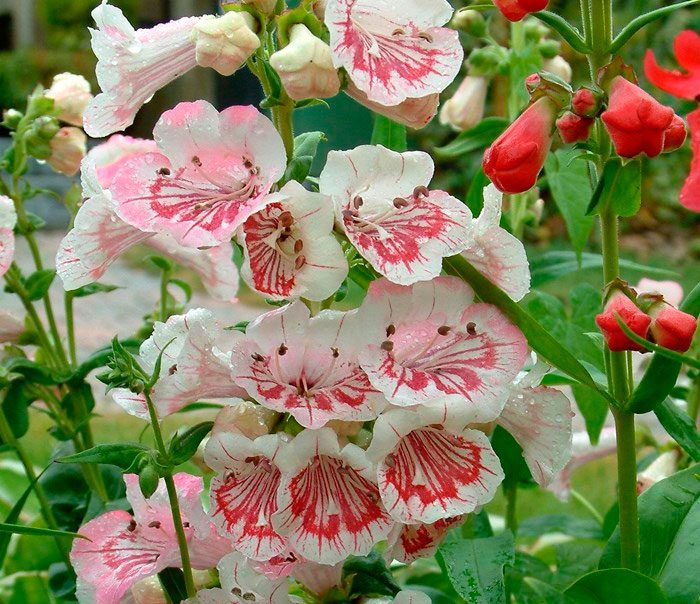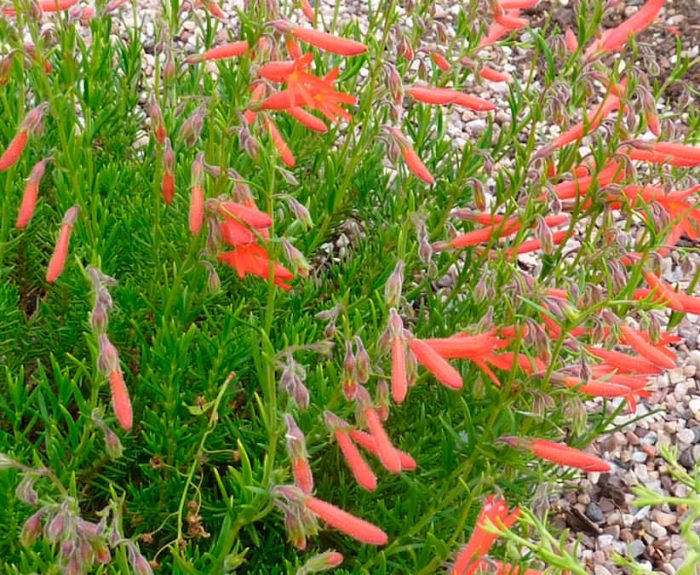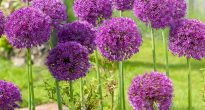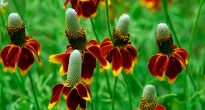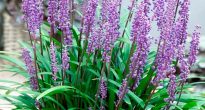The genus of perennials Penstemon is represented by subshrubs and shrubs. This plant is native to Central and North America. Domestic botanists classify the penstemone as a Norichnikov family, and foreign experts in the Plantain family, which includes more than 250 genera.
Content
- 1 Features of penstemon
- 2 Planting and caring for penstemon outdoors
- 3 Breeding penstemon
- 4 Diseases and pests
- 5 Types and varieties of penstemon with a photo
- 5.1 Penstemon Perennial
- 5.2 Penstemon digitalis (Penstemon digitalis)
- 5.3 Penstemon the Bearded (Penstemon barbatus)
- 5.4 Penstemon Dark Towers
- 5.5 Penstemon Carillo Red
- 5.6 Penstemon hartwegii
- 5.7 Penstemon davidsonii
- 5.8 Penstemon Mystica (Penstemon digitalis "Mystica")
- 5.9 Penstemon campanulate (Penstemon campanulatus)
- 5.10 Penstemon Hasker Red
- 5.11 Penstemon Hybrid
- 5.12 Penstemon Harsutus (Penstemon hirsutus)
- 5.13 Penstemon Sensation
- 5.14 Penstemon Rubra
- 5.15 Penstemon Pygmy
- 5.16 Penstemon Cobo
- 5.17 Penstemon Red-leaved
- 5.18 Penstemon alpine (Penstemon alpinus)
- 5.19 Penstemon the Darkleaf
- 5.20 Penstemon Ice Cream
- 5.21 Penstemon pinifolius (Penstemon pinifolius)
Features of penstemon
From Latin, the name "penstemon" is translated as "almost stamen". The fact is that the flower of this plant has only one unusual-shaped stamen, it is sterile and very long, due to which it protrudes far beyond the petals. The British call this plant "bearded tongue". Gardeners rarely grow such a flower in mid-latitudes. But every year the popularity of this culture is growing, thanks to its unusual shape, long flowering and beautiful foliage. Flowers appear on the bushes in the first days of June, and the duration of flowering can vary from 2 to 3 months. It is quite easy to grow such a culture in your garden, but this is only if you select the right site for it and provide it with the right care.
Planting and caring for penstemon outdoors
Seat selection
Penstemon is distinguished by its photophilousness. That is why a sunny area is most suitable for growing it. Also, when choosing a place for planting, pay attention to the fact that this flower reacts extremely negatively to drafts. The soil should be well drained and lightweight.
Growing seedlings
Penstemon is propagated by seeds, while growing it both through seedlings and in a seedless way. Sowing seeds for seedlings is carried out in February.To do this, take a seedling box and fill it with nutritious soil. Sow the seeds, and they are buried quite a bit into the substrate. Water the crops using a spray bottle. Cover the seeds with a thin layer of calcined sand on top, and then re-moisten the crops. And on top, cover the box with glass (film). Transfer the seed container to a well-lit and warm place. The first seedlings should appear after half a month. Taking care of crops is quite simple: they need regular ventilation (once a day) and a temperature of at least 20 degrees, and also do not forget to moisten the substrate if necessary.
When the first true leaves appear at the seedlings, they should be cut into peat pots. The grown seedlings are planted in the garden in the last days of May, and the soil and drainage are prepared in advance. At the same time, remember that the sooner you plant the penstemon bushes in the garden, the later they will begin to bloom.
Watering
Water such a plant systematically. Pay special attention to watering if there is a prolonged dry period. But do not let the liquid stagnate in the ground. To do this, water the bushes only when the surface of the soil dries out. In order to avoid stagnation of liquid in the root system of the plant, when planting seedlings in open ground, do not forget to make a drainage layer of fine expanded clay or coarse sand at the bottom of each planting hole. And in order to prevent moisture from evaporating from the ground too quickly, its surface around the bushes is mulched with a layer of dry peat or compost. Each time the plant is watered, remember to loosen the soil near it and remove the weeds.
Suitable soil
The soil on the site should be fertile, loose, allow water and air to pass through well, and also have high acidity. To improve the quality of the garden soil, it is combined with peat, fine gravel, compost or sand. And in order to achieve optimal acidity, when digging the soil, it is recommended to add charcoal to it.
Transfer
In order for penstemon to always be effective and neat, it is recommended to replant it regularly (once every 5 years). As a rule, the plant is transplanted in the spring. In this case, the transplantation procedure is combined with reproduction by dividing the bush. Remove the mature shrub from the soil and carefully divide it into several parts, while being careful not to injure the root system. Delenki are planted in a new area in pre-prepared holes, at the bottom of which a drainage layer must be made. Upon completion of the planting, the soil surface is slightly compacted, and then they are watered. Cover the planting with a layer of mulch. After about four weeks, the cuttings will completely take root.
Top dressing
The first time the bushes are fed during their landing in open ground. To do this, when digging the soil, compost is introduced into it. Also, plants are fed with organic matter, introducing it into the soil three times during the season.
Before the bushes bloom, they are fed with a complex mineral fertilizer, which contains a large amount of phosphorus. Thanks to this, the penstemon will bloom more magnificently and effectively.
Flowering features
Bushes bloom in June, while spectacular inflorescences, as a rule, decorate the plant throughout the summer period or until the first frost (depending on the species and variety). In some species, the flowers are outwardly similar to snapdragons, in other species they are bell-shaped. As a rule, the inflorescences are dense, large and racemose, they consist of white, blue, purple, yellow, pink, red or orange flowers. There are also varieties with bicolor flowers. When the flowering is over, seeds are formed on the plant, they can be used for subsequent sowing.
Pruning
In late autumn, while preparing the plant for wintering, cut off its stems completely.During the growing season, do not forget to systematically cut off all dried shoots, leaf plates, and also inflorescences from the bushes. If the flower has grown very much, it must be thinned out.
Preparation for wintering
Some of the species and varieties of penstemon are cultivated in mid-latitudes as a perennial plant. During the preparation of the bushes for wintering, the stems are cut off at the root, and the plantings are covered with a layer of spruce branches or dried foliage from above. In order to protect the root system of plants from stagnant melt water in spring, do not forget to make a good drainage layer at the bottom of the pits when planting penstemon, and also, with the onset of heat, throw snow from the site before it melts.
Breeding penstemon
Growing from seeds
Most often, gardeners propagate penstemone by seed. Seed material can be harvested from bushes in your garden, or purchased from a specialist store. It is recommended to sow them in open ground in autumn or spring, after the return frosts are left behind. Sow seeds in a previously prepared area, while sprinkling them with a not very thick layer of soil.
Seeds of some species of penstemon must be stratified before sowing (for example, alpine penstemon). To do this, they are sown in the garden in October or November, where they will undergo natural stratification in the soil in winter. However, experienced gardeners recommend sowing seed material in boxes, while sprinkling it on top with a thin layer of soil or sand. Crops are kept at room temperature for 20 days. During this time, the seeds will have time to swell. After that, the box is covered with 1 layer of lutrasil on top and transferred to the garden. Don't forget to secure the lutrasil or it could be blown away by the wind. For example, you can secure it with an elastic band by tying it around the container. Thanks to this shelter, weed seeds will not get into the substrate. Crops must be outdoors for at least 8 weeks, during which time the seeds will have time to stratify. If it snows, be sure to sprinkle the crops with it, because thanks to the melted water, the seedlings appear much faster. With the onset of spring, the crops are transferred to a warm room or a greenhouse, where seedlings will appear over time. As a rule, the first shoots appear in about a week and a half. However, some of the bushes you have grown from seeds may begin to bloom in the first year of growth.
Cuttings
First, prepare cuttings, for this you need to cut off those stems on which there are no inflorescences. After that, the lower part of the segments is treated with a solution of a product that stimulates root growth. In the garden, select an area in partial shade, and plant cuttings on it. Each stalk is covered with a plastic bottle from above, the neck of which is pre-cut. When the cuttings are fully rooted, they can be transplanted to a permanent location.
How to propagate by layering
Only undersized and weaving varieties can be propagated by layering. Select a stem, bend it to the surface of the soil and sprinkle with a layer of soil. The roots on the layer should appear in about 30 days, after which it is cut off from the parent bush, removed from the ground and planted in a new place.
Dividing the bush
In this way, it is most convenient to propagate penstemone during transplantation. First, remove the mature shrub from the soil, remove the soil from its root system, and divide it into parts. After that, the delenki are planted in pits, which should be prepared in advance. Remember that you can divide a bush only if it is already 3 years old. Younger bushes often die with this method of reproduction. All penstemon bushes must be divided once every 5 years, thanks to this you will be able to both rejuvenate the plant and propagate it.Do not neglect the rejuvenation procedure, since a plant older than five years begins to age very quickly: new stems cease to form in it, and inflorescences do not appear, which inevitably leads to a complete loss of decorativeness.
Diseases and pests
Often at the garden penstemon, the tops of the stems begin to dry out. If this happens to your plant, then cut off all its shoots at the root as soon as possible. If this is not done, then this can cause the death of the bush. Don't worry, the cut plant will grow new stems very quickly.
If you water the bushes too often and abundantly, it will lead to stagnation of fluid in the root system, which will cause the development of gray rot. Because of her, shoots begin to fade. At the first sign of illness, loosen the soil around the bush and spill it with a fungicidal solution. Penstemon is very resistant to pests, so they do not disturb him.
It is very easy to grow penstemon in your garden, even a beginner can do it. Such a plant does not have any special requirements for care, and it grows well in middle latitudes. Thanks to this, such a spectacular perennial is gaining more and more popularity among gardeners every year.
Types and varieties of penstemon with a photo
Penstemon Perennial
This herbaceous perennial plant is quite bushy, thanks to which it is able to form a lush and rather spectacular bush. Its straight shoots are decorated with dark green lanceolate foliage. The bush has a height of about 120 cm. The shape of the flowers is tubular and bell-shaped, and they can be painted in red, pale pink, white, lilac, and also in other shades. Flowers are part of the panicles. Flowering lasts almost all summer.
Penstemon Digitalis (Penstemon digitalis)
The height of the bush is about 100 centimeters. Comparatively large inflorescences are colored pinkish. The bush blooms in the first summer weeks, and the flowering duration is four weeks. The plant is highly resistant to frost, which allows it to winter well in mid-latitudes, even without shelter.
Penstemon the Bearded (Penstemon barbatus)
This species blooms early and very luxuriantly. The height of an adult bush is about 0.9 m. The color of the flowers is quite unusual: the outer surface is colored scarlet, and the inner one is white. The plant blooms in May, and fades in the last days of July.
Penstemon Dark Towers
This variety has appeared relatively recently. It is good because it is winter-hardy and blooms magnificently. The shape of the maroon leaves is lanceolate. During flowering, beautiful panicles are formed, consisting of pinkish flowers. The bushes have an average height (about 0.7 m), but they bloom throughout the summer.
Penstemon Carillo Red
Bushes with a height of about 0.6 m are decorated with lanceolate foliage of a rich green color. Woody shoots are rather thin. During flowering, purple panicles are formed, and it is observed from July to October.
Penstemon hartwegii
This perennial is outwardly similar to the snapdragon plant. Its height is about 0.7 meters. Large racemose inflorescences have an unusual shape. They consist of orange, purple, scarlet white or red flowers. The bushes begin to bloom in the second half of the summer period, while their flowers are decorated until the first frost.
Penstemon davidsonii
This species is short, its height does not exceed 0.3 meters. Lanceolate leaves of medium size are colored green. Small inflorescences have a lilac color. Flowering begins in the first weeks of the summer and ends in mid-October.
Penstemon Mystica (Penstemon digitalis "Mystica")
The height of the bushes is about 0.7 meters. Shoots and foliage are colored maroon. From June to the last days of August, the plant is decorated with white fragrant brushes.
Penstemon campanulate (Penstemon campanulatus)
The height of the shoots in this species is about 0.9 meters. Small lilac-pink flowers look like bells. Lanceolate leaves are colored greenish. Flowering begins in June and ends in September.
Penstemon Hasker Red
This plant has a height of about 0.7 meters. The stems are decorated with brownish-green lanceolate leaves, and during flowering, pinkish-white brushes form on them. Flowering begins in May and ends in October.
Penstemon Hybrid
Such an annual plant has a decorative appearance. Its stems are about 0.8 meters high. Lanceolate dark green leaves have a pointed tip. Pale purple or blue small flowers are bell-shaped. Flowering begins in June and ends in September.
Penstemon Harsutus (Penstemon hirsutus)
This low-growing perennial plant forms a lush bush that reaches a height of only about 0.3 meters. On the surface of the lanceolate dark green leaf plates there is a slight pubescence. Bell-shaped purple flowers are not very large. This kind blooms in the summer.
Penstemon Sensation
Low-growing bushes have a height of no more than 0.45 meters. The foliage pointed at the top is colored dark green. Long, very effective brushes are two-tone, and they can be painted in a red-blue or bluish-white shade. Flowering is observed from July to September.
Penstemon Rubra
The height of such a perennial plant is about 0.7 meters. Medium-sized dark green leaf plates are pointed at the top. Large inflorescences have a two-tone color: pinkish-white, reddish-white or burgundy-white. Flowering is observed throughout the summer period.
Penstemon Pygmy
The height of the low-growing bushes is only about 0.2 m. It is covered with dense dark green foliage of a lanceolate shape, on the surface of which there is pubescence. From June to August, the bushes are decorated with light lavender brushes.
Penstemon Cobo
The vigorous bush has a height of about 1.2 m, and is covered with large greenish leaves with a pointed top. Comparatively large brushes can be pinkish-white, reddish-white, white, violet-white or purplish-white.
Penstemon Red-leaved
The height of this perennial is about 0.7 m. Its large leaves with pointed tops are painted in a maroon color. The color of bell-shaped flowers can be pink, red, white and purple. Bushes bloom in the summer.
Penstemon alpine (Penstemon alpinus)
Low-growing bushes are decorated with dark olive narrow and long leaves. Dense inflorescences are outwardly similar to snapdragons, they have a bright sky blue hue. Bushes bloom in June, and only fade in September.
Penstemon the Darkleaf
Such a plant has a height of about 0.6 m, and its leaves, painted in a maroon shade, taper towards the top. The brushes are whitish-pink. This species blooms throughout the summer.
Penstemon Ice Cream
The height of this species is about 0.8 m, while its shoots are lignified. Green leaf plates have a pointed tip. Creamy large flowers have a mid-purple hue, and there are stains of the same shade on their petals. It blooms from the beginning to the end of the summer period.
Penstemon pinifolius (Penstemon pinifolius)
The height of this undersized plant is about 0.3 meters. Lignified straight shoots are decorated with lanceolate leaves of a dark green color. Lush large inflorescences are painted in a rich yellow hue. Flowering begins in June and ends in August.

